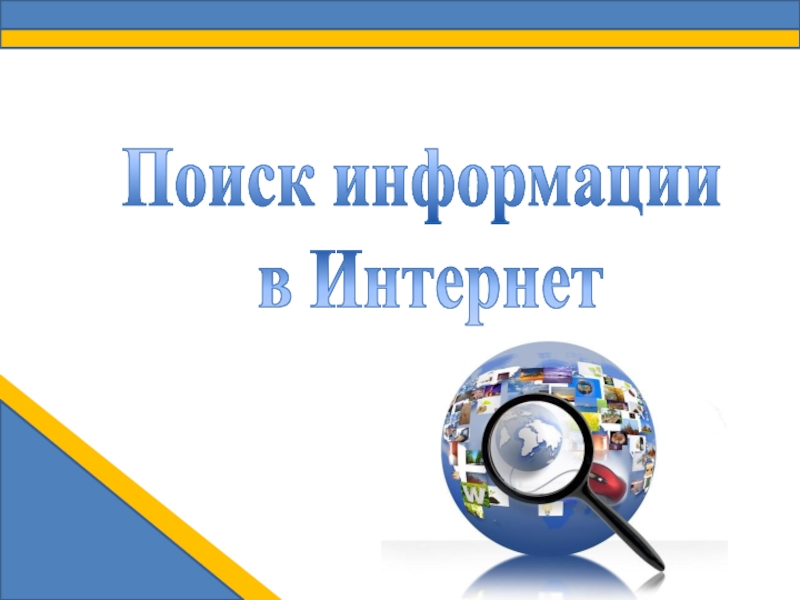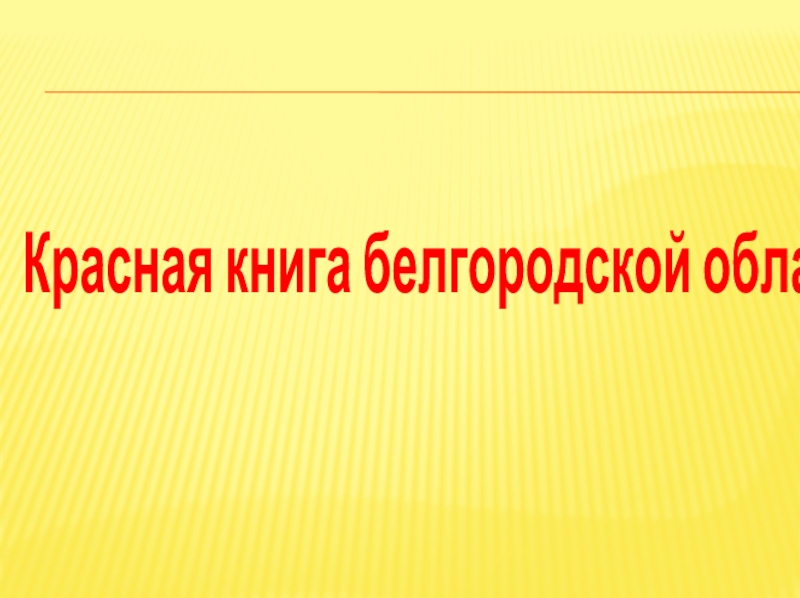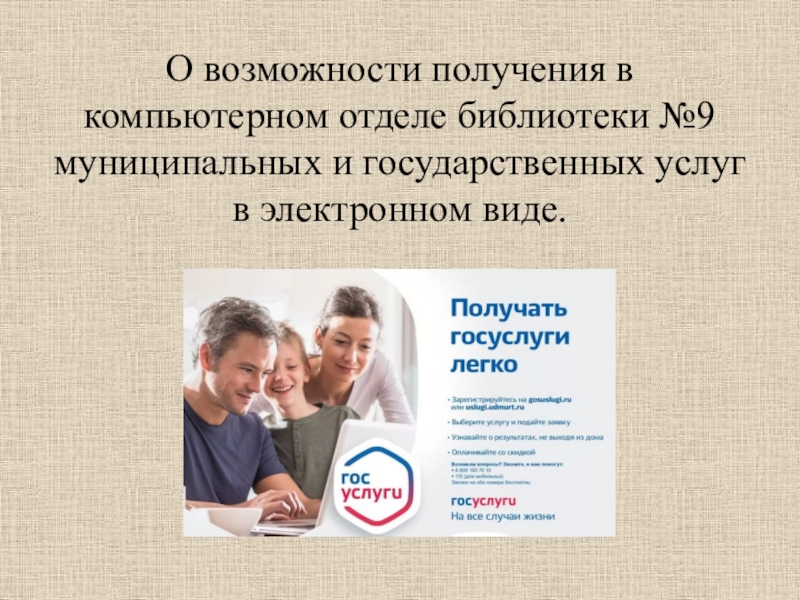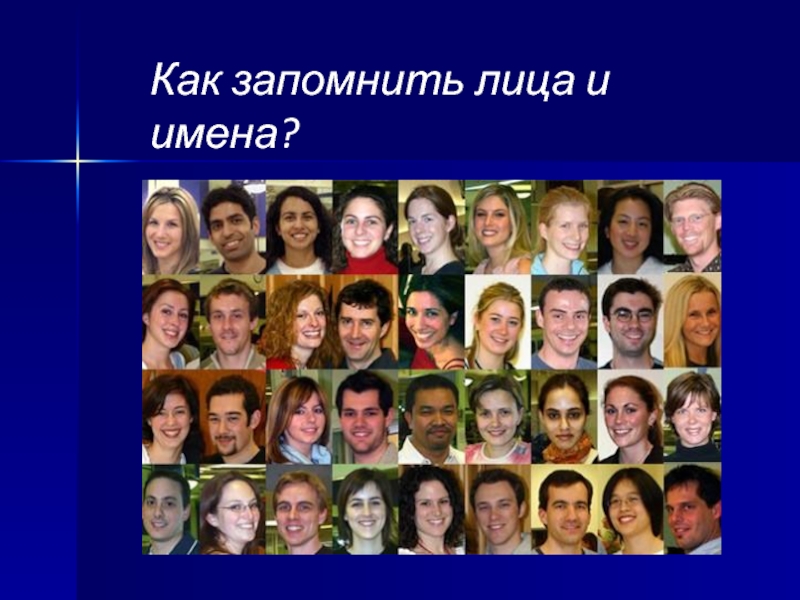Слайд 2What is it?
Phonetics is an independent branch of linguistics
It studies
the sound matter, its aspects and functions.
Phonetics is connected with
linguistic and non – linguistic sciences : acoustics, physiology, psychology, logic, etc.
Phonetics formulates the rules of pronunciation for separate sounds and sound combinations.
Слайд 3Vowel sounds are pronounced not only as we name the
letters corresponding to them:
a [ei]
e
[I:]
I [ai]
y [wai]
u [ju:]
o [эu]
[æ] – can [a:] – car [εэ] – care
[e] – them [ ε:] – fern [iэ] – here
Слайд 4connected with grammar
The system of rules of reading phonetics is
connected with grammar and helps to pronounce correctly singular and
plural forms of nouns, the past tense forms and past participles of English regular verbs.
For example:
[d] is pronounced after voiced consonants ( beg – begged) ,
[t] – after voiceless consonants ( wish – wished) ,
[id] – after [t] ( want – wanted).
It is only if we know that [s] is pronounced after voiceless consonants, [z] after voiced and [iz] after `sibilants, that we can pronounce the words books, bags, boxes correctly.
The ending -ed is pronounced [id], following [t] or [d], eg.:
Waited [weitid], folded [ fэuldid].
Some adjectives have a form with [id], eg.:
Crooked [' krukid], naked ['neikid], ragged [rægid]
Слайд 5sound interchange
The interchange of [f-v], [s-z], [θ- ] helps to
differentiate singular and plural forms of such nouns as :
calf – calves [f-v],
leaf – leaves [f-v],
house – houses [s-z].
Слайд 6Vowel interchange
helps to distinguish the singular and the plural of
such words as :
basic – bases ['beisi:s - 'beisi:z],
crisis — crises [' kraisI:s - ' kraisi:z],
analysis –analyses [ə' næləsI;s – ə' næləsi:z]
and also :
man-men[mæn – men],
foot – feet [ fut – fi:t],
goose – geese [gu:s – gi:z],
mouse – mice [maus- mais].
Vowel interchange is connected with the tense forms of irregular verbs, for instance :
sing – sang – sung; write – wrote – written, ect.
Слайд 7Vowel interchange
can also help to distinguish between :
a) nouns and
verbs, eg. bath – bathe [a:- ei],
b) adjectives and nouns,
eg. hot – heat [p –i: ],
c) verbs and adjectives, eg. moderate – moderate [ei - i],
d) nouns and nouns, eg. shade- shadow [ei - æ],
e) nouns and adjectives, eg. type – typical [ai - i].
Слайд 8Vowel interchange
can also be observed in onomatopoetic compounds:
jiggle – joggle
– толчок, покачивание.
flip – flop – легкий удар, шлепок.
chip –
chop – рубить топором, штыковать.
flap – flop – шлепать, шлепнуть.
hip-hop - подпрыгивать при ходьбе.
Слайд 9Consonants
can interchange in different parts of speech for example in
nouns and verbs:
extent – extend [t-d]
mouth – mouth [Θ -
]
relief – relieve [f-v]
Слайд 10connected with grammar
Phonetics is also connected with grammar though its
intonation component . Sometimes intonation alone can serve to single
out the logical ' predicate of the sentence.
Compare:
' He came home. Not Mary or John.
He ˛came home. So you can see him now.
He came ' home. He is at home, and you said he was going to the club.
Слайд 11Affirmative sentences
He ' came ˛home.
He ' came ۭ home.
Pausation
' What
' writing ' poet is 'doing is interesting.
Слайд 12Phonetics is connected with lexicology
We can distinguish certain nouns from
verbs ( formed by conversion)
' abstract реферат – to ab'
stract извлекать
' object предмет — to ob' ject не одобрять
' transfer перенос — to trans ' fer переносить
Слайд 13Homographs
bow [bəu] лук — bow [bau] поклон
lead [li:d] руководство —
lead [led] свинец
row [rəu] ряд — row [rau] шум
sewer [səuə]
швея — sewer [sjuəu] сточная труба
tear [tεə] разрыв — tear [tiə] слеза
wind [wind] ветер — wind [waind] виток
Due to the position of word accent we can distinguish between homonymous word and word groups, eg:
' blackbird дрозд - 'black ` bird черная птица
Слайд 14Phonetics is connected with stylistics
First of all though intonation and
its components:
speech melody,
utterance stress,
rhythm,
pausation
voice tamber
Слайд 15writer helps the reader
to interpret his ideas through special words
and remarks such as : a pause, a short pause,
angrily, hopefully, gently, incredulously, etc.
For example:
“ Now let me ask you girls and boys, would you paper a room with representations of horses?”
After a pause, one half of the children cried in chorus, “ Yes, sir! “. Upon which the other half, seeing in the gentleman's face that “ Yes” was wrong , cried out in chorus, “No , sir ! “ - as the custom is in these examination .
“ Of course, no. Why wouldn't you?”
A pause. ( Ch. Dickens. Hard Times)
Слайд 16If the author wants to make a word or a
sentence specially prominent or logically accented , he uses graphical
expressive means.
For example:
“ You must paper it,” said the gentleman, rather warmly.
“ You must paper it,” said Thomas Gradgrind, “ whether you like it or not. Don't tell us you wouldn't paper it”.
Слайд 17Phonetics is also connected with stylistics through repetition of words,
phrases and sounds.
Regular recurrence of accented elements, or rhythm, may
be used as a special device not only in poetry, but in prose as well.
For example:
“ Now , What I want is Facts. Teach these boys and girls nothing but Facts. Facts alone are wanted in life. Plant nothing else and root out everything else. You can only form the minds of reasoning animals upon Facts; nothing else will ever be of any service to them.”
In the extract given below the repetition of the word fact helps Ch. Dickens to characterize his hero, Mr. Gradgrind as a narrow-minded person unable to see anything behind bare facts.
Слайд 18“ Thomas Gradgrind , sir. A man of realities. A
man of facts and calculations. A man who proceeds upon
the principle that two and two are four, and nothing over, and who is not to be talked into allowing for anything over. Thomas Gradgrind, sir – peremptorily Thomas – Thomas Gradgrind .
In the description of Gradgrind's “ mental introduction” rhythm is achieved through the repetition of parallel constuctions, beginning with the word man , which gradually develop and help to achieve the climax of significance.
Слайд 19There are twelve months in all the year,
As I hear
many men say,
But the merriest month in all the year
Is
the merry month of May.
Thus, the repetition of the sonant [m] in the lines of the ballad, given below ( together with the other stylistic devices ), helps to produce the effect of merriment.
The repetition of the words year, say and May produes the effect of rhyme.
Слайд 20Onomatopoeia
a combination of sounds which imitate sounds produced in nature,
is one more stylistic device which can serve as an
example of the connection between phonetics and stylistics.
E.g. : tinkle, jinkle, clink, ting, chink; chatter, jabber, clatter, babble ; chirp, cheep, twitter, chirrup ; clap, dab, smack; crash, bang.
Слайд 21The study of phonetic phenomena from the stylistic point of
view is phonostylistics.
It is connected with a number of
linguistic and non – linguistic disciplines, such as: paralinguistics, psychology, psycholinguistics, sociology, sociolinguistics, dialectology, literary criticism , aesthetics, information theory, etc.
Слайд 22Phonetics
articulatory
( physiological ) physiological )
perceptive
( auditory ) physiological
)
functional
( linguistic ).
Слайд 23Articulatory and perceptive, acoustic, functional.
Articulatory and perceptive investigation of speech
sounds is done on the basis of a good knowledge
of the voice and sound producing mechanisms , their structure, work and perceptive ( auditory ) effects, that is – physiology and psychology.
Acoustic properties of sounds, that is , quantity , or length, tamber, intensity, pitch, temporal factor are investigated by the acoustic and auditory branch of phonetics.
The phonological or functional properties of phonemes, syllables, accent and intonation are investigated by means of special linguistic methods, which help to interpret them as socially significant elements.
Слайд 24Theoretical and Practical significance
Theoretical significance of phonetics is connected with
the further development of the problem of the synchronic study
and description of the phonetic system of a national language, the comparative analysis and description of different languages and the study of the correspondences between them, the diachronic description of successive changes in the phonetic system of a language or different languages.
Practical significance of phonetics is connected with teaching foreign languages. Practical phonetics is applied in methods of speech correction, teaching deaf – mutes , film doubling, transliteration, radio and telephone.


![Photetics Vowel sounds are pronounced not only as we name the letters Vowel sounds are pronounced not only as we name the letters corresponding to them:a [ei]](/img/thumbs/007aa217621ab5e217ff34968ffa7312-800x.jpg)

![Photetics sound interchangeThe interchange of [f-v], [s-z], [θ- ] helps to differentiate sound interchangeThe interchange of [f-v], [s-z], [θ- ] helps to differentiate singular and plural forms of such](/img/thumbs/45f81f230ade132bc00f05ae5e9b7599-800x.jpg)

![Photetics Vowel interchangecan also help to distinguish between :a) nouns and verbs, Vowel interchangecan also help to distinguish between :a) nouns and verbs, eg. bath – bathe [a:- ei],b)](/img/thumbs/32ea12d53ac5a203808284af72d91288-800x.jpg)
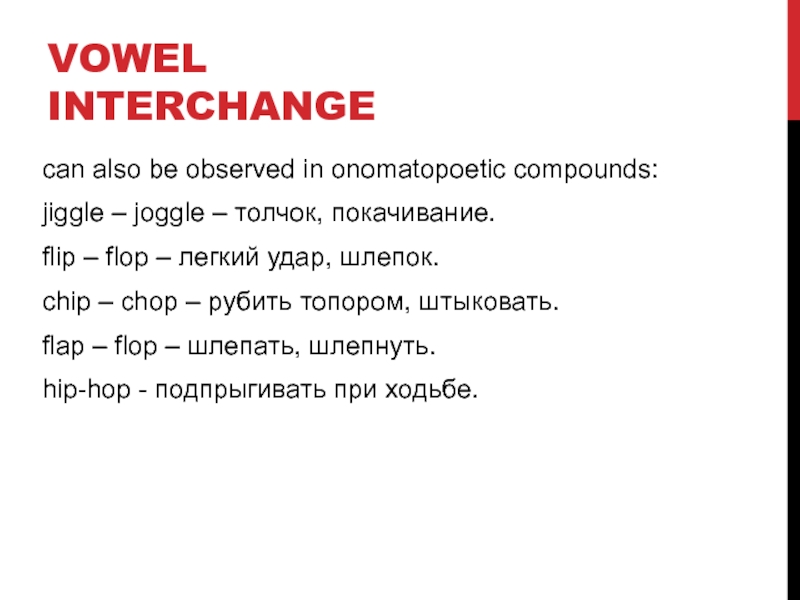
![Photetics Consonantscan interchange in different parts of speech for example in nouns Consonantscan interchange in different parts of speech for example in nouns and verbs:extent – extend [t-d]mouth –](/img/thumbs/1330aef05777b0555dcb38d80e3ffd71-800x.jpg)



![Photetics Homographsbow [bəu] лук — bow [bau] поклонlead [li:d] руководство — lead Homographsbow [bəu] лук — bow [bau] поклонlead [li:d] руководство — lead [led] свинецrow [rəu] ряд — row](/img/thumbs/278756cb834486e7c2d5de5d50202e17-800x.jpg)













